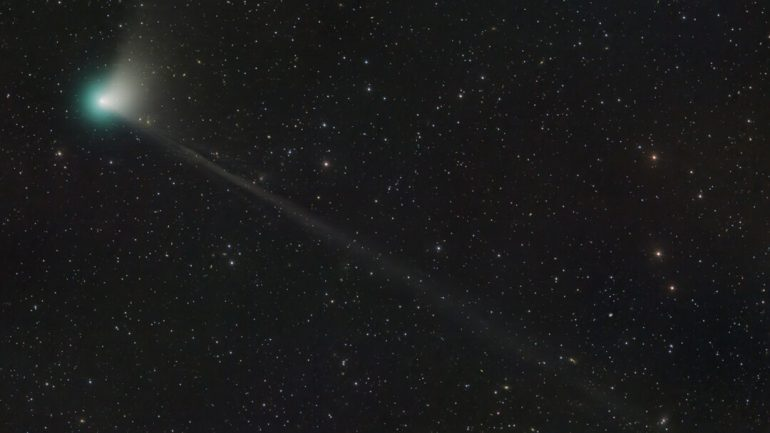
The last time the starry sky saw the passage of Commentary C2022 (ZTF) was in the fullness of the Paleolithic. Around the same time, humans already made figurines depicting fertility goddesses, and organized their first family dinners around controlled campfires.
Viewed differently, this celestial body has not visited the Solar System since the Homo sapiens faced the last glacial period. Here we tell you where the comet comes from, what is its nature and when will be the best time to see it this 2023.
A lonely traveler returns to the Solar System
Comet C/2022 (ZTF) has already entered the Solar System. By the end of January 2023, it will have a new approach to Earth. Before this happens, the celestial body will reach its perihelion (or closest point to the Sun) on Thursday, January 12. However, that will not be the best date to observe the astronomical event.
This comet will pass at a distance of 0.28 astronomical units from our planet, flying through the constellation Camelopardalis.
As to where its name comes from, the term originates from the scientific nomenclature astronomers use to recognize and identify comets. Here we explain, one by one, the parts:
C: it means that the comet is not periodic (since it was last seen 50 thousand years ago)
2022: refers to the year in which it was detected (March 2022).
E3 comes from the comet naming system approved by the International Astronomical Union, and 3 refers to it being the third astronomical object discovered in the same period.
ZTF: The comet was discovered with telescopes from the Zwicky Transient Facility.
How to view the C2022 E3 (ZFT)?
The space agency hopes that, from the Northern Hemisphere, comet C/2022 (ZTF) will be observed in the morning. To observe it, it is always important to consider light pollution can be an obstacle to a good appreciation of the phenomenon.
If we are in a clearer place, with little visual interference, it will be possible to see the celestial body moving in a northeasterly direction throughout January 2023. According to NASA, although the brightness of comets is virtually unpredictable, there is a good chance that it can be seen with the naked eye. Especially, when it reaches perigee, the closest point to Earth, the 1st day. and February 2 of this year. (Text and photo: National Geographic)